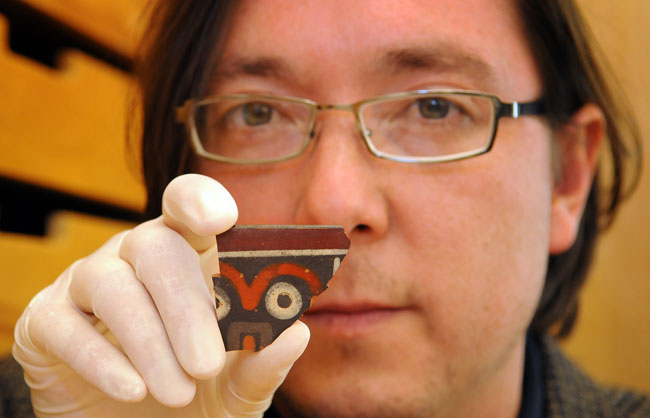Mining Site Predates Incan Empire

An ancient iron ore mine discovered in Peru reveals civilizations in the Andes mined the valuable rock before the Inca Empire.
Archaeologists have known that people in the Old and New Worlds have dug for ore for millennia, but there is little evidence for such mines in the ancient Americas.
"What we found is the only hematite mine — a type of iron also known as ochre — recorded in South America prior to the Spanish conquest," said researcher Kevin Vaughn, an archaeologist at Purdue University in West Lafayette, Ind. "This discovery demonstrates that iron ores were important to ancient Andean civilizations."
Tough trucking
The mine, dubbed Mina Primavera, was discovered by traveling miners in the Ingenio Valley of the Andes Mountains in southern Peru. Vaughn, with archaeologist Moises Linares and colleagues, then spent four years excavating and researching it.
"Our biggest problem was having a reliable truck — the roads are very bad there," Vaughn recalled. "We've broken four trucks in four years."
The scientists determined the mine was a human-made cave first created roughly 2,000 years ago. The mine, which is nearly 700 cubic meters in size — about seven times the volume of a double-decker bus — is in a cliffside facing a modern ochre mine.
Sign up for the Live Science daily newsletter now
Get the world’s most fascinating discoveries delivered straight to your inbox.
Vaughn and his team discovered a number of artifacts in Mina Primavera, including corncobs, gourd fragments, stone tools, beads made of shell and stone, and shards of textiles and pottery.
"We didn't find any habitations near the mine — it looks as if the miners camped out in the mine itself," Vaughn told LiveScience. "We have maize cobs, so people were eating there; fragments of bottle gourd, used to hold water; fragments of textiles, some probably for clothing, some of which were stained, possibly to carry processed hematite back; shells of Spondylus, the thorny oyster, which was used for fertility rituals in the Andes."
The small ceramic fragments, "about the size of a penny, had distinct designs on them that are characteristic of the early Nasca civilization," he explained.
Famous lines
The Nasca civilization, which existed from about 1 to 750 AD, is well known for hundreds of drawings in the Nasca Desert known as the Nasca Lines — stylized hummingbirds, spiders, monkeys, lizards, sharks, llamas and other figures can only be seen from the air. It also built an aqueduct system that is still used today.
The researchers estimate more than 3,700 metric tons of hematite were extracted from the ancient mine during more than 1,400 years of use. Vaughn conjectures the Nasca civilization used the red-pigmented mineral primarily for ceramic paints, but they also could have used it as body paint, to paint textiles and even to paint adobe walls.
The iron was not extracted from the ore for use in tools, Vaughn explained. "Metals were used for a variety of tools in the Old World, such as weapons, while in the Americas, metals were used as prestige goods for the wealthy elite," he said.
"The fact that you have this mine way out in the middle of nowhere suggests that this was a regular, important activity," Vaughn said. "There's a lot of labor involved in extracting 3,700 tonnes of material."
Much remains uncertain regarding mining in the ancient Americas — for instance, whether it was controlled by a head of state or simply conducted by traveling miners, and what networks may have existed to circulate and trade such ore. "We've found one piece of a much larger archaeological puzzle," Vaughn said.
The researchers next hope to look for more mines and mining-related encampments in the region, and to undertake additional excavations at Mina Primavera.
The scientists detailed their findings last month in the Journal of the Minerals, Metals & Materials Society.
- Pre-Incan Metallurgy Discovered
- Quiz: The Artifact Wars
- History's Most Overlooked Mysteries










